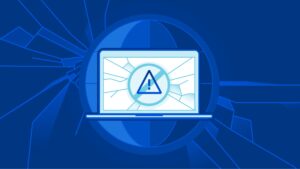Efficient inventory management is the cornerstone of successful restaurant operations, ensuring seamless supply chain processes and cost control. In today’s digital age, restaurant inventory management software offers innovative solutions to streamline inventory operations and maximize efficiency. This comprehensive guide explores the benefits, features, and top considerations for implementing restaurant inventory management software.
The Importance of Efficient Inventory Management
Inventory management is a critical aspect of restaurant operations, impacting everything from food costs to customer satisfaction. Effective inventory control ensures that restaurants have the right ingredients on hand, minimizes waste, and prevents stockouts. By optimizing inventory processes, restaurants can improve profitability, reduce overhead costs, and enhance overall operational efficiency.
Challenges of Manual Inventory Management
Traditional manual inventory management methods are prone to errors, time-consuming, and lack real-time visibility. Handwritten logs and spreadsheets make it difficult to track inventory levels accurately and analyze trends. Additionally, manual processes are labor-intensive and can lead to discrepancies, overstocking, and stockouts, negatively impacting restaurant profitability and customer experience.
Benefits of Restaurant Inventory Management Software
Restaurant inventory management software offers a range of benefits for streamlining inventory processes and improving operational efficiency. Key advantages include:
- Real-time Inventory Tracking: Software solutions provide real-time visibility into inventory levels, allowing restaurants to track stock movements accurately and prevent shortages or overstocking.
- Cost Control: By analyzing inventory data and tracking ingredient usage, restaurants can identify cost-saving opportunities, minimize waste, and optimize purchasing decisions.
- Enhanced Accuracy: Automated inventory management reduces the risk of human error associated with manual data entry, ensuring accurate inventory records and reducing discrepancies.
- Streamlined Operations: Inventory software automates repetitive tasks such as inventory counting, order generation, and supplier management, freeing up time for staff to focus on other critical aspects of restaurant operations.
Features to Look for in Restaurant Inventory Management Software
When evaluating inventory management software for restaurants, it’s essential to consider key features that address specific operational needs and challenges. Some essential features to look for include:
Inventory Tracking and Reporting
Comprehensive inventory tracking capabilities allow restaurants to monitor stock levels, track ingredient usage, and generate detailed reports on inventory performance. Advanced reporting functionalities provide valuable insights into inventory trends, supplier performance, and cost analysis, enabling data-driven decision-making.
Purchase Order Management
Purchase order management features streamline the procurement process by automating order generation, vendor communication, and invoice reconciliation. Integration with supplier databases and automatic reorder points ensure that restaurants maintain optimal stock levels and minimize out-of-stock situations.
Integration with POS Systems
Integration with point-of-sale (POS) systems enables seamless data synchronization between inventory and sales transactions. This integration allows restaurants to track inventory in real-time, update stock levels automatically, and analyze sales data to forecast demand accurately.
Top Considerations for Choosing Restaurant Inventory Management Software
When selecting restaurant inventory management software, there are several key factors to consider:
Scalability
Choose a software solution that can scale with your restaurant’s growth and evolving needs. Look for flexible pricing plans and customizable features that can accommodate changes in inventory volume, menu offerings, and business requirements over time.
Ease of Use
Opt for user-friendly software with an intuitive interface that is easy for staff to learn and use. Training and onboarding resources should be readily available to ensure a smooth transition to the new system and minimize disruptions to operations.
Customer Support
Select a software provider that offers reliable customer support and technical assistance. Look for providers that provide responsive customer service, comprehensive training resources, and ongoing support to address any issues or questions that may arise.
Conclusion
Restaurant inventory management software offers a range of benefits for optimizing operations, reducing costs, and improving efficiency. By leveraging the features and functionalities of these software solutions, restaurants can streamline inventory processes, minimize waste, and make data-driven decisions to drive profitability and success.
With careful consideration of key features, scalability, and customer support, restaurants can choose the right inventory management software to meet their specific needs and achieve operational excellence.




